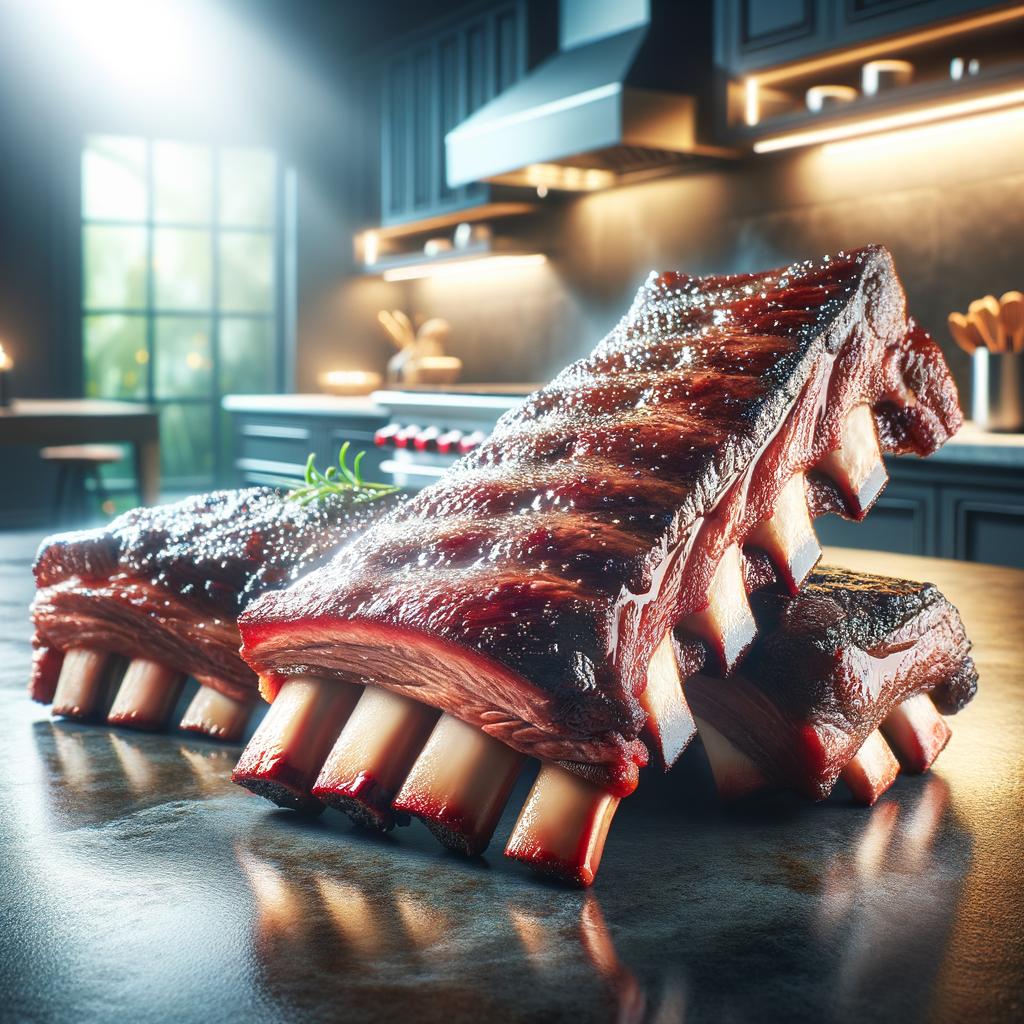Beef Ribs

Description
Beef ribs are a culinary delight, a masterpiece of nature's kitchen that has been treasured by cultures worldwide. These are large, meaty bones cut from the lower chest and backbone of a cow. They possess a deep, rich red hue, a testament to their robust flavor and high iron content. The texture of beef ribs is a beautiful paradox; they are simultaneously tough and tender. When cooked low and slow, the meat becomes incredibly tender, almost melting off the bone, while the exterior forms a delightful, crispy crust. The flavor profile is intensely savory, with a unique richness that sets it apart from other cuts of meat.
Primary Uses
Beef ribs are versatile and lend themselves to a variety of cooking methods, from grilling and roasting to braising and smoking. They are a staple in American barbecue, where they are often slow-cooked over a wood fire and slathered with a tangy, sweet sauce. In Korean cuisine, they are marinated in a sweet and savory sauce and grilled to perfection in a dish known as Galbi. Beef ribs also play a significant role in Jewish cuisine, where they are slow-cooked in a flavorful broth to make a hearty cholent. Beyond the culinary world, beef ribs are often used in traditional medicine for their high collagen content, which is believed to promote joint health.
History
The history of beef ribs is as rich and complex as their flavor. They have been a staple in human diets since prehistoric times, with evidence of their consumption found at ancient archaeological sites. In the Middle Ages, beef ribs were a luxury item, often served at royal banquets. Over time, they became more accessible and started to play a significant role in various cuisines. In American history, beef ribs gained popularity during the cattle drives of the 19th century, where cowboys would slow-cook the tough cuts of meat over a campfire. Today, they are a beloved part of food culture, celebrated in barbecue competitions and family gatherings alike.
Nutritional Information
Beef ribs are a powerhouse of nutrition. They are high in protein, providing essential amino acids necessary for muscle growth and repair. They also contain a substantial amount of iron, which is crucial for red blood cell production. Beef ribs are rich in B-vitamins, particularly B12, which supports nerve function and the formation of DNA. They also contain a good amount of zinc, which boosts the immune system. However, they are also high in saturated fat and should be consumed in moderation. Compared to other cuts of beef, ribs have a higher bone-to-meat ratio, which means they offer more collagen and gelatin, beneficial for skin and joint health.

